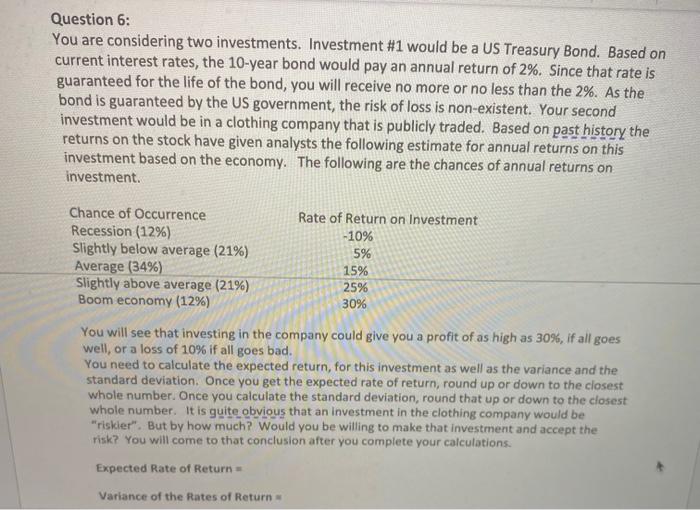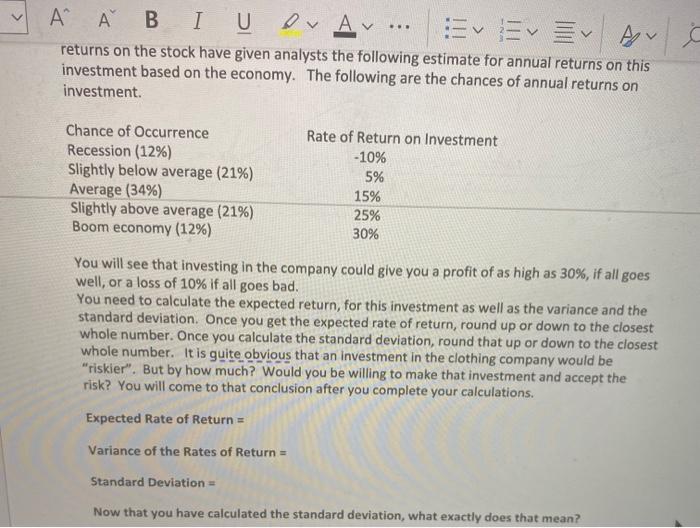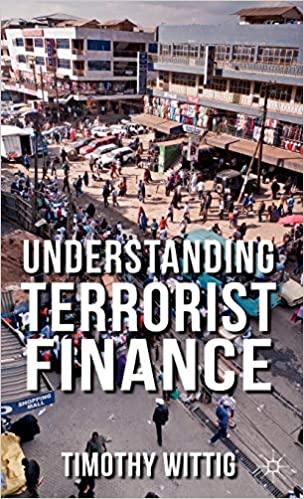Question 6: You are considering two investments. Investment #1 would be a US Treasury Bond. Based on current interest rates, the 10-year bond would pay an annual return of 2%. Since that rate is guaranteed for the life of the bond, you will receive no more or no less than the 2%. As the bond is guaranteed by the US government, the risk of loss is non-existent. Your second investment would be in a clothing company that is publicly traded. Based on past history the returns on the stock have given analysts the following estimate for annual returns on this investment based on the economy. The following are the chances of annual returns on investment. Chance of Occurrence Recession (12%) Slightly below average (21%) Average (34%) Slightly above average (21%) Boom economy (12%) Rate of Return on Investment -10% 5% 15% 25% 30% You will see that investing in the company could give you a profit of as high as 30%, if all goes well, or a loss of 10% if all goes bad. You need to calculate the expected return, for this investment as well as the variance and the standard deviation. Once you get the expected rate of return, round up or down to the closest whole number. Once you calculate the standard deviation, round that up or down to the closest whole number. It is guite obvious that an investment in the clothing company would be "riskier". But by how much? Would you be willing to make that investment and accept the risk? You will come to that conclusion after you complete your calculations. Expected Rate of Return Variance of the Rates of Return . Ever Av ' U DA v returns on the stock have given analysts the following estimate for annual returns on this investment based on the economy. The following are the chances of annual returns on investment. Chance of Occurrence Recession (12%) Slightly below average (21%) Average (34%) Slightly above average (21%) Boom economy (12%) Rate of Return on Investment -10% 5% 15% 25% 30% You will see that investing in the company could give you a profit of as high as 30%, if all goes well, or a loss of 10% if all goes bad. You need to calculate the expected return, for this investment as well as the variance and the standard deviation. Once you get the expected rate of return, round up or down to the closest whole number. Once you calculate the standard deviation, round that up or down to the closest whole number. It is guite obvious that an investment in the clothing company would be "riskier". But by how much? Would you be willing to make that investment and accept the risk? You will come to that conclusion after you complete your calculations. Expected Rate of Return = Variance of the Rates of Return = Standard Deviation Now that you have calculated the standard deviation, what exactly does that mean








